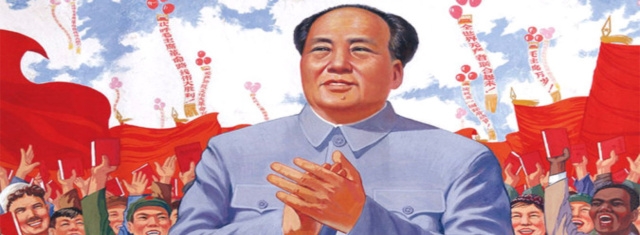Politics
Bitter balance sheet published: Terror of Mao felt today
In China Cultural Revolution begins

Mao Zedong as a guide icon (Source: Photo: James Vaughan via Flickr)
USPA NEWS -
On the occasion of the 50th anniversary of the Cultural Revolution in China (. 16.5), the Society for Threatened Peoples (STP) the focus of their magazine "Threatened Peoples - pogrom" to the reign of terror of Mao Zedong. His death will mark 2016 for the 40th time.
Particular attention was paid in the STP Magazine on the serious human rights violations against Mongols, Uyghur and Tibetans. The fate of these communities remains related to the Cultural Revolution mostly unmentioned. She brought 1966-1976 around three million people across the country to death, hundreds of millions of people were tortured and humiliated. The total number of victims under Mao's regime from 1949 to 1976 is estimated at 35 million to 80 million.
Pull on pages 75 human rights and minority experts in the journal a bitter balance just for minorities, where genocide of hundreds of thousands of victims have been committed throughout the period of Mao's rule.
are portrayed not only the cruel crime of predominantly young Red Guards, the fanatical, the Central Committee of the Communist Party (KP) under the leadership of Mao for the Cultural Revolution and cruel to teachers, intellectuals, artists, merchants, clergymen, landowners, unpopular politicians, even family members and marching friends and let destroy valuable cultural assets and sacred sites.
are portrayed not only the cruel crime of predominantly young Red Guards, the fanatical, the Central Committee of the Communist Party (KP) under the leadership of Mao for the Cultural Revolution and cruel to teachers, intellectuals, artists, merchants, clergymen, landowners, unpopular politicians, even family members and marching friends and let destroy valuable cultural assets and sacred sites.
Furthermore, the authors also make references to today's China, where the regime under Xi Jinping increasingly methods of intimidation and harassment can be applied from the time of the Cultural Revolution to secure its power.
So there are mass trials in front of spectators in stadiums, on camera coerced confessions are transmitted on state television, fighting "Western ideas" and religious freedom severely restricted.
But there are also rare attempts by the processing of this dark chapter of Chinese contemporary history presented in China as the underground magazine "Remembrance", which is a digital spread, a few critical books and writings,
which were published in Hong Kong, and the only museum in China.
So there are mass trials in front of spectators in stadiums, on camera coerced confessions are transmitted on state television, fighting "Western ideas" and religious freedom severely restricted.
But there are also rare attempts by the processing of this dark chapter of Chinese contemporary history presented in China as the underground magazine "Remembrance", which is a digital spread, a few critical books and writings,
which were published in Hong Kong, and the only museum in China.
Header Photo: James Vaughan via Flickr
Contact: Sandy Naake, editor of the magazine "threatened people thus - pogrom", and Hanno Schedler, employees in Asia Unit
Email: redaktion@gfbv.de, asien@gfbv.de, presse@gfbv.de
Union for Human Rights and Minorities (MUM)
Cooperation partners of the Society for Threatened Peoples (STP)
1120 Wien, Wienerbergstraße 16-20 / 9/1
Contact:
Press Department: presse@u-mum.international
Website: http://www.u-mum.international
Contact: Sandy Naake, editor of the magazine "threatened people thus - pogrom", and Hanno Schedler, employees in Asia Unit
Email: redaktion@gfbv.de, asien@gfbv.de, presse@gfbv.de
Union for Human Rights and Minorities (MUM)
Cooperation partners of the Society for Threatened Peoples (STP)
1120 Wien, Wienerbergstraße 16-20 / 9/1
Contact:
Press Department: presse@u-mum.international
Website: http://www.u-mum.international
Liability for this article lies with the author, who also holds the copyright. Editorial content from USPA may be quoted on other websites as long as the quote comprises no more than 5% of the entire text, is marked as such and the source is named (via hyperlink).





